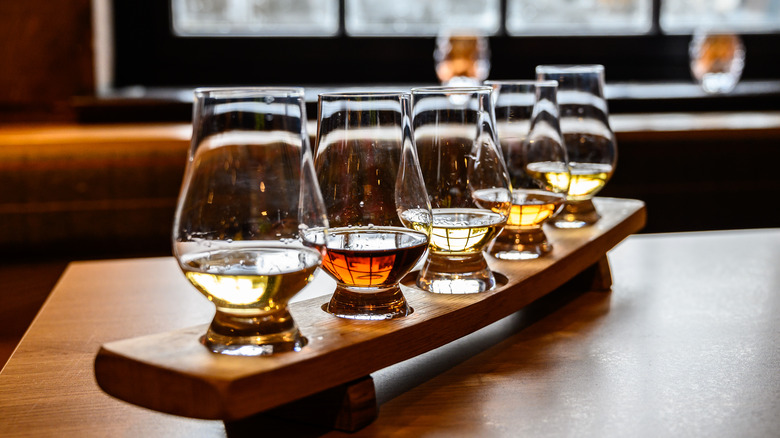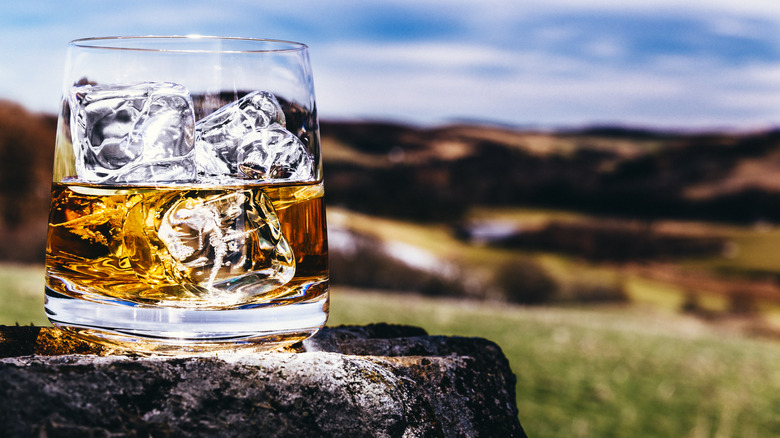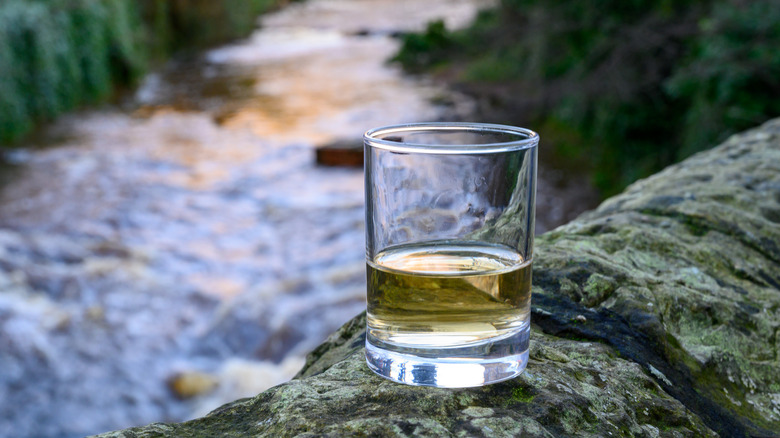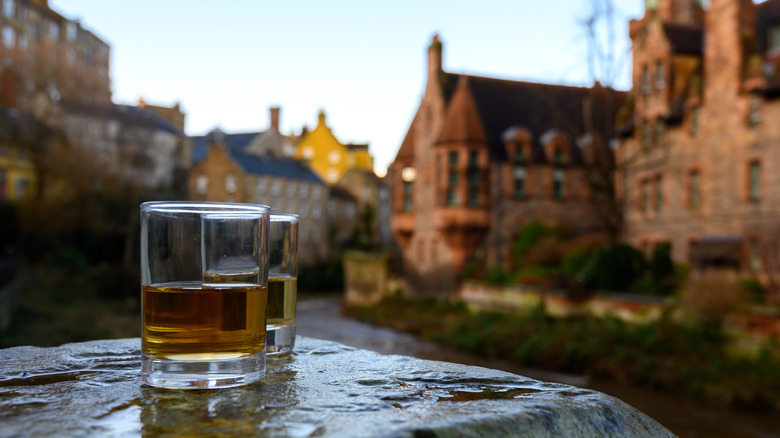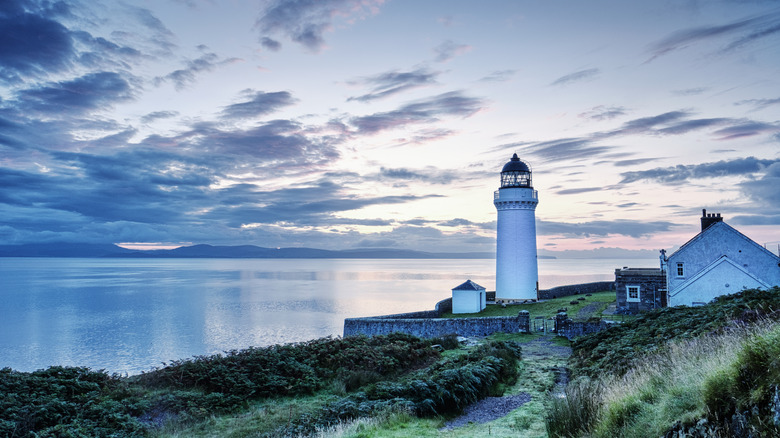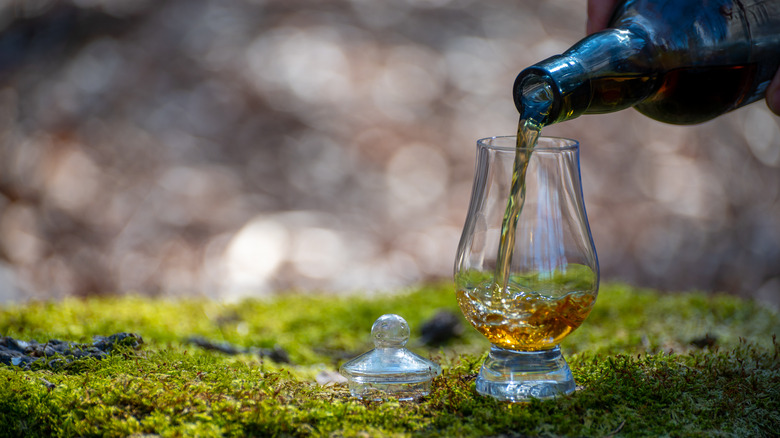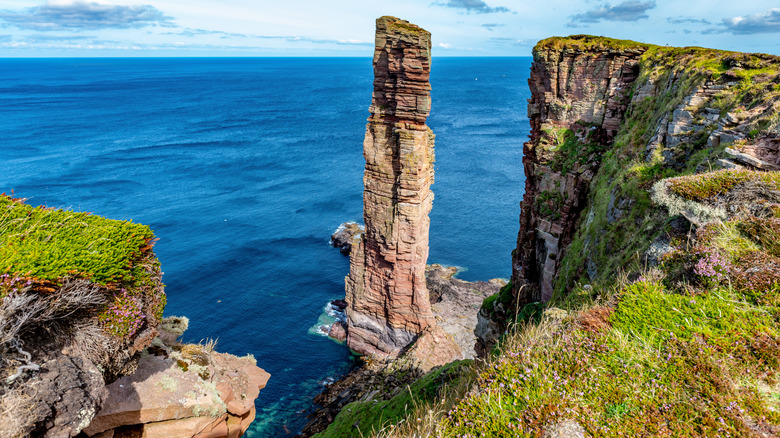What Are The Differences Between Scotland's Whisky Regions?
All Scotch is whisky, but not all whisky is Scotch. Much like real champagne can only come from the Champagne region of France, Scotch is whisky made exclusively in Scotland. To complicate matters, while the rest of the world refers to Scottish whisky as "Scotch," in Scotland, the people simply call it "whisky," which is not to be confused with Irish and American whiskey. The land of lochs and castles doesn't have a single region where the spirit is made. Rather, there are distilleries all over the country, and, depending on where the Scotch comes from, you can expect a variety of different aromas, flavors, and overall character. Most agree (including the Scotch Whisky Association) that there are five undisputed whisky regions in Scotland: Highlands, Speyside, Lowlands, Campbeltown, and Islay. While disputed, some consider the Islands region as a sixth whisky-producing area (naysayers believe the Islands are part of the Highlands).
In some ways, Scotch is like wine — even though different brands may come from the same country, they can taste completely different depending on where they're produced. Terroir and microclimate can greatly affect the same grape, or in Scotch's case, the same barley and spring water. The differences in the whiskies from each region are exceptional. If you're looking to find your favorite one, you've got some work to do.
Highland whisky
The Highlands is the largest whisky-producing region in Scotland (by landmass), extending from the northernmost tip of the country down to just north of Glasgow. Because the region is so vast and widespread, so are the flavors and styles of whiskeys made there. Distilleries in the Highlands are located on the coast, in the mountains, and in the moors, all of which affect the flavors and character of whisky due to ocean air versus inland air, minerals in the soil, and so forth. A Highland whisky may be fruity and full-bodied, floral and light, or smoky and smooth. Highland whisky tends to have bold flavors — think oak, fruit cake, and heather.
Some of the most recognized distilleries in the Highlands include Dalmore, Glenmorangie, Dalwhinnie, and Oban. There are over 25 distilleries widely spread out over the Highlands and together they make up about 25% of Scotland's whisky production. The oldest whisky distillery in Scotland (Glenturret) is located in the Highlands and dates back to 1775. If you want to taste an official "Royal" Scotch, you'll need to pick one from the highlands. There are currently two, Royal Brackla and Royal Lochnagar, but there used to be a third before it closed (Glenury Royal).
Speyside whisky
The region of Speyside is a small area that surrounds the River Spey in Northeastern Scotland. It is technically part of the Highlands, but it's recognized as its own region under Scottish whisky regulations. Speyside is so concentrated with whisky distilleries (there are over 60), that it produces over 60% of the country's single malt whiskeys. Whisky from this region is known for having sweet and subtle flavor profiles like apple, vanilla, oak, malt, spice, and dried fruit. It is often aged in sherry casks.
If you were to tour the Speyside region of Scotland, you'd experience some of the most breathtaking landscapes in the country — picture rolling hills covered in purple heather, multi-colored row houses peppering the river, and distilleries scattered throughout. There is no doubt you'd also run into some very familiar Scotch distillery names such as Glenfiddich, Balvenie, Glenlivet, The Macallan, and Glenrothes. Since the region is so dense with whisky makers, it is a great area to visit if whisky tastings and distillery touring are something you're interested in.
Lowlands whisky
The Lowlands region of Scotland is another vast swathe of land — encompassing Glasgow, Edinburgh, and running south to the English border. Despite its size, there are less than a handful of distilleries in the Lowlands. In general, peat moss plays an important role in most Scottish whiskies. Because of the many peat bogs in the country, it has a history of using dried peat as a fuel source, including feeding the fires used to heat whisky stills, and as a flavoring agent (damp barley heated over peat creates a smoky flavor). What sets Lowlands whisky apart is that peat generally isn't used in the production process. This results in silky, light whiskeys with signature flavors of cream, toffee, toast, and cinnamon.
Some recognizable distilleries in the Lowlands include Auchentoshan, Glenkinchie, and Bladnoch. Because of their lighter, more gentle character, Lowlands whiskies are great for those who are new to Scotch drinking and make excellent aperitifs.
Campbeltown whisky
The Campbeltown region is in the southwest of mainland Scotland and juts out to touch the icy North Channel, right at the Mull of Kintyre. It was once the home of over 30 distilleries — but now only three are currently producing whiskey. Production here was so large that it once produced two-thirds of Scotland's whisky. The harbor itself was originally built to ferry precious whisky from Scotland down into London. The area is surrounded by rich ocean air, which affects the flavor of the whisky made here, giving it a saline or briny profile along with flavors of smoke, vanilla, and toffee. Many describe Campbeltown whiskies as robust and full-flavored — more similar to Highland than Lowland varieties, but sweeter.
You will find Glen Scotia, Glengyle, and Springbank distilleries here, all of which offer tours and tastings. Each year, Campbeltown hosts a Malt Whisky Festival that gives visitors the opportunity to taste the region's whiskies, learn about the production process, and celebrate the role that the spirit plays in Scotland's history and society.
Islay whisky
Islay (pronounced "eye-la") is a Scottish island that is located southwest of the mainland and west of the Campbeltown region. There are fewer than ten distilleries in Islay, but they include some famous ones like Ardbeg, Laphroaig, and Lagavulin. If you're looking for a good example of a Scottish whisky with lots of smoky flavor, you want to try one from the Islay region. The whiskies produced here are known for their super peaty flavors due to the fact that the island is incredibly abundant in peat moss. Other flavors found in this region's whiskies include salt, seaweed, and apple. Many describe them as complex and full-bodied, the epitome of "strong whiskies." These sipping whiskies are not for the faint of heart.
The whisky industry in Islay is extremely important for the community, as most people here have jobs that revolve around making the spirit. Visitors can see the distilleries mentioned above by walking or biking to them, as they are located within a three-mile radius of each other. All near the shoreline, you'll take in incredible views of the ocean and landscapes as you sip strong spirits.
Islands whisky
Whisky from the islands region understandably comes from islands all around Scotland — from the Isle of Arran in the south up the western coast including the Isle of Skye and the Isle of Lewis, and around to the northernmost Orkney Islands. With such distance between them, island whiskeys are pretty varied in flavor profile. They all seem to share characteristics of peat and salinity because of their proximity to the sea, but you'll find flavors of pepper, honey, herbs, and even oil in the various island whiskies. Not all of Scotland's islands have distilleries on them (there are over 800 islands, after all); most of them are found on Orkney, Lewis, Skye, Mull, Jura, and Arran.
Some of the more recognizable names in island whisky are Highland Park in the Orkney Islands, Jura on its namesake island, and Talisker on the Isle of Skye — which is the largest of the island producers in the country.
With over 140 whisky distilleries in Scotland, the country is the densest area for whiskey production in the world. For many Scots, the spirit is a way of life, and they strive to carry on whisky-making traditions that have been in place for centuries. Each whisky region excels in its signature product, and the differences between all of them are what makes Scottish whisky so interesting, delicious, and never ever boring.

